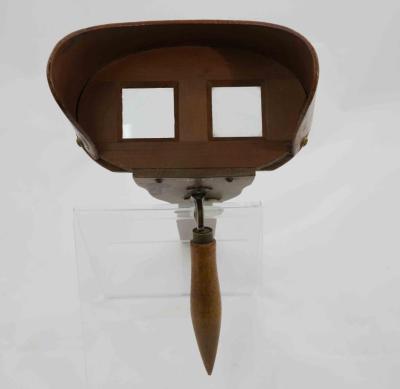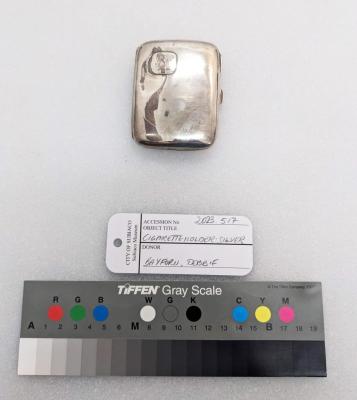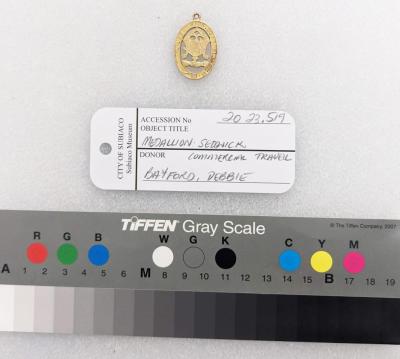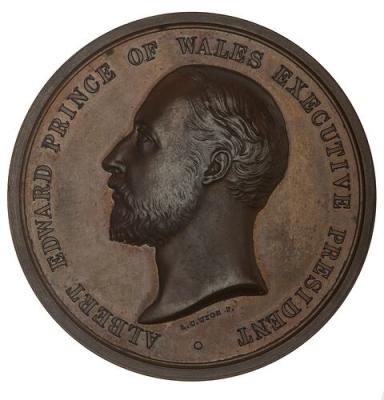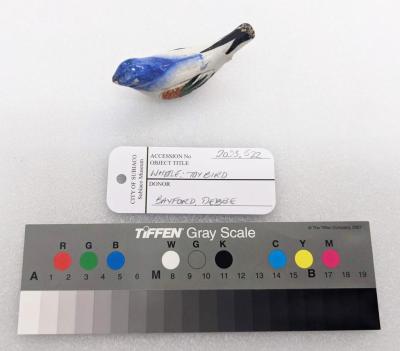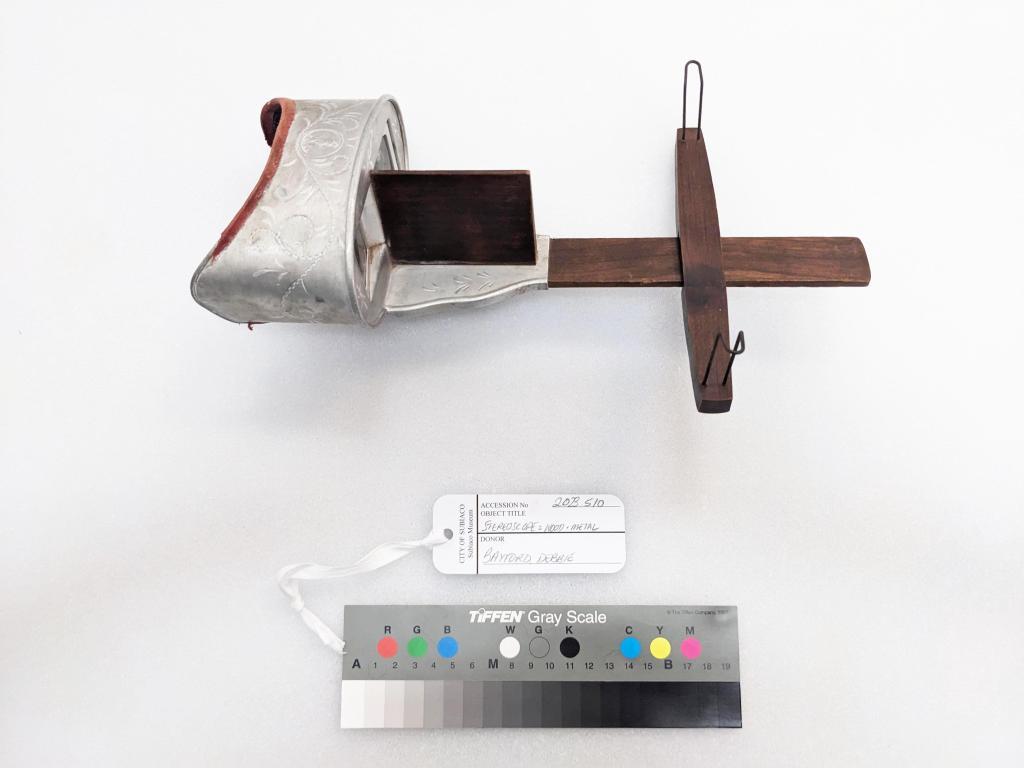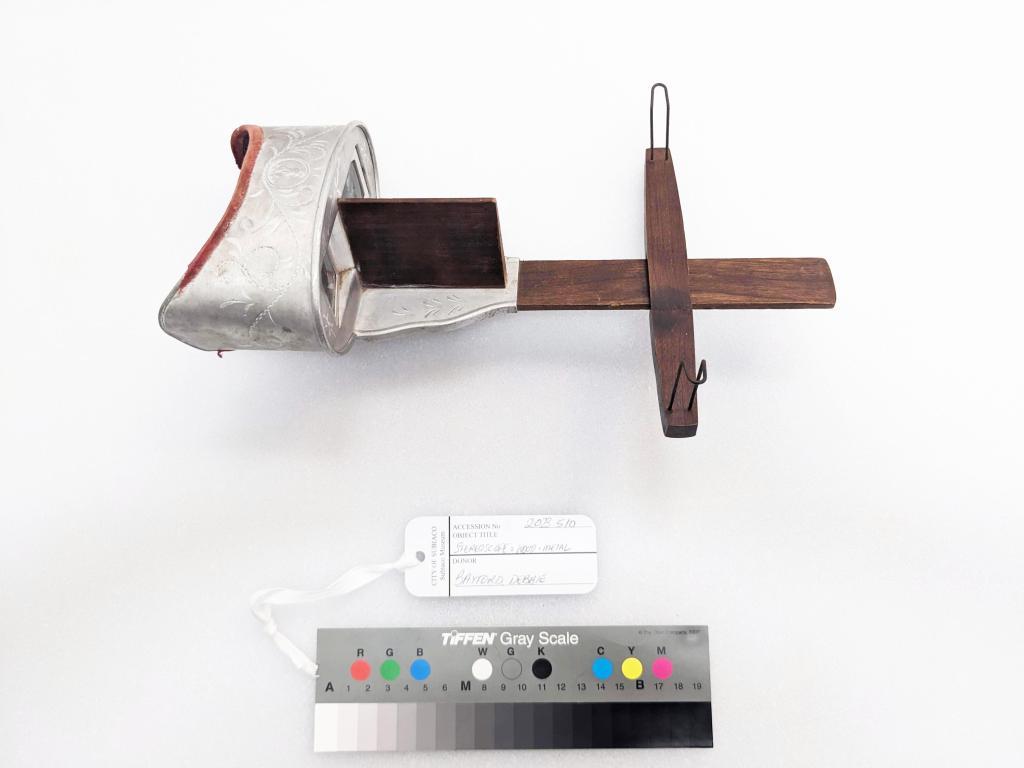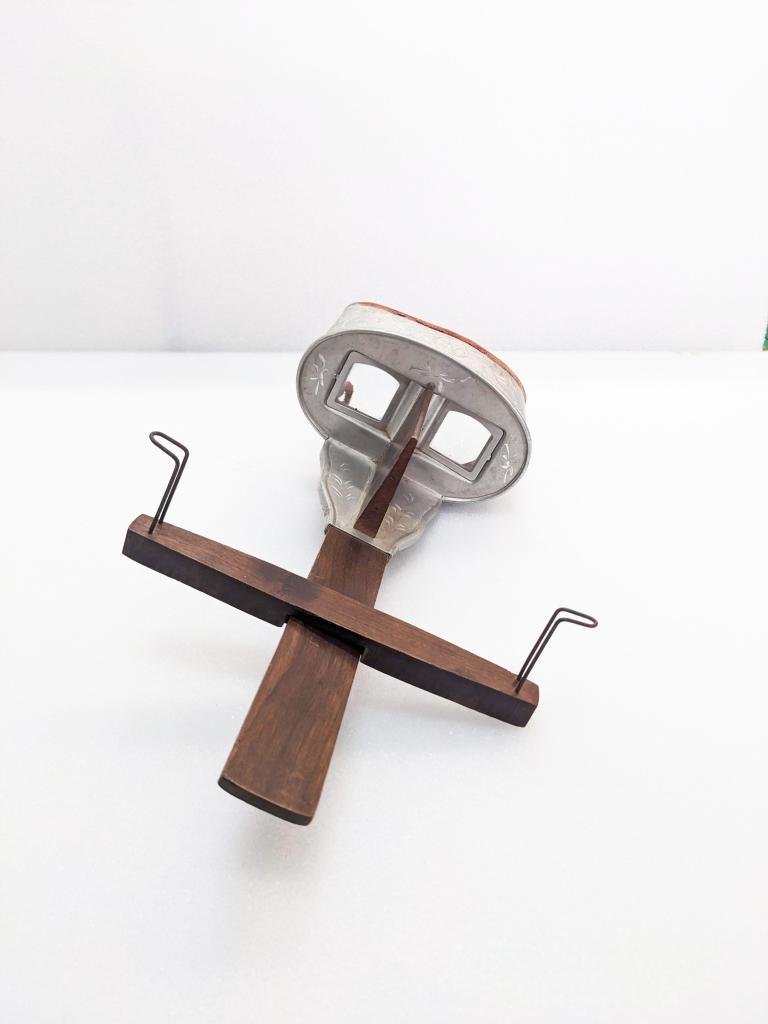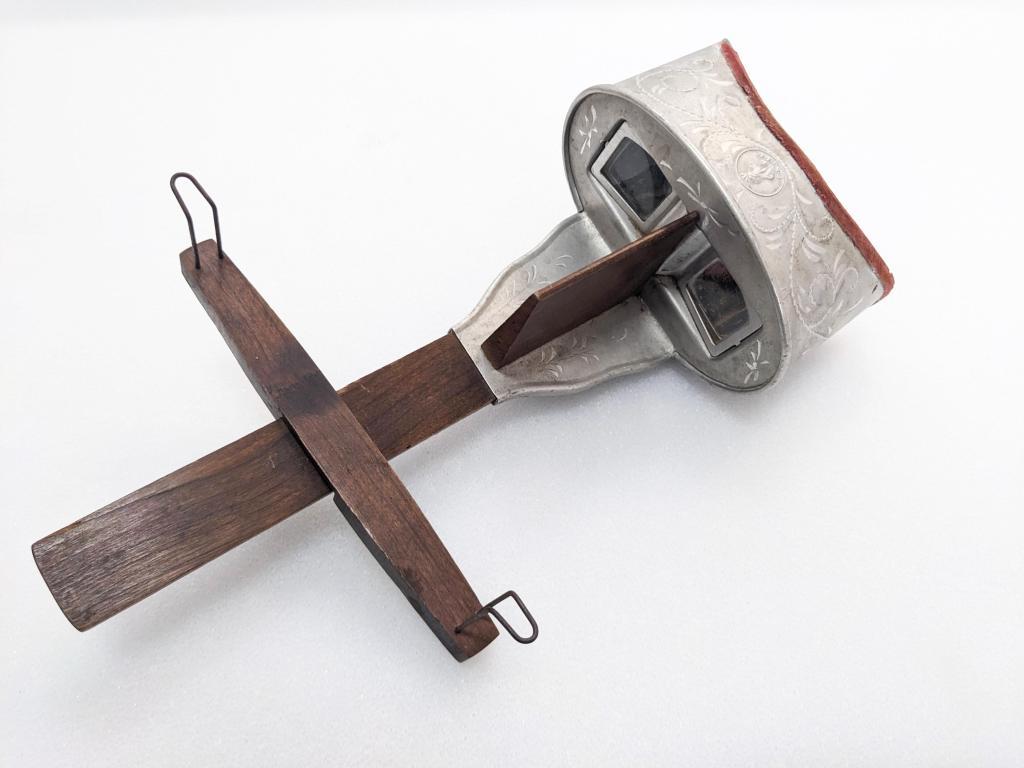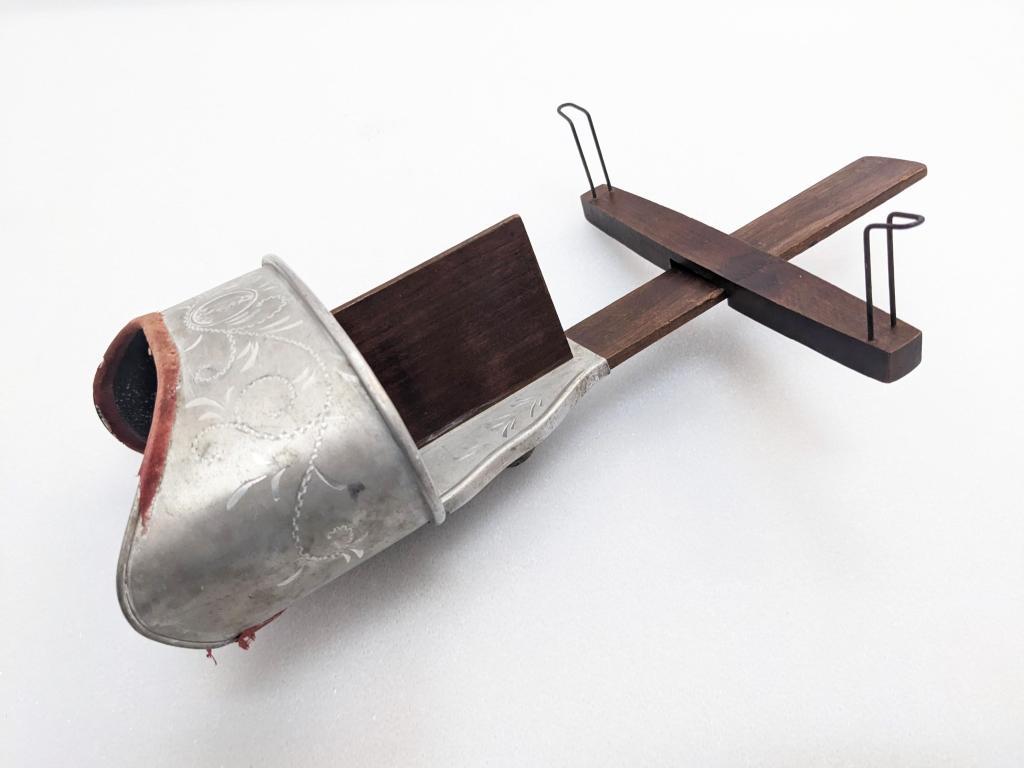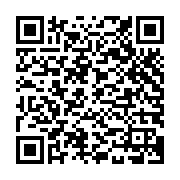VIEWER: WOOD AND METAL STEREOSCOPE, ALEXANDER SEDGEWICK
c. 1900Hand-held wooden viewer. Turned wooden handle, which can fold back for storage, is attached to a metal plate and wooden bar. At one end of the viewer made of metal and decorated across top with engravings is the viewing glasses. It is shaped to fit face at eye level and cut-out at nose. It is bordered with velveteen fabric that is well worn. There are two square shaped lens, through which one views a postcard. Along the wooden bar is a wooden cross piece that adjusts along the bar. The cross piece has two metal arms that support the postcard or image.
A Brief History of the Stereoscope
Virtual reality has been with us for a long time. One of the earliest tools was the stereoscope. People could look through two eyepieces at two photos taken at slightly different angles to see a three-dimensional image for the first time. Adults and children were able to travel to interesting places from the comfort of their homes and classrooms.
The earliest stereoscope has been attributed to Sir Charles Wheatstone as well as to David Brewster. Both worked in the early 1800s. Stereoscopes were also called stereo viewers. They quickly became the most popular forms of entertainment for middle- and upper-class families during the late 1800s and early 1900s. Oliver Wendell Holmes invented an updated, hand-held version of the stereoscope which then became the favorite for home and classroom use from 1881 to 1939.
Details
Details
Underside 'Patented Apri 5th 1904'
Photographic history. An example of hand held stereoscopic viewer.
Historic:
Scientific:
More items like this
Other items from Subiaco Museum
- TOY: WOODEN KANGAROO
- TOY: FABRIC ELEPHANT, OLIVE
- CIGARETTE HOLDER: SILVER, INSCRIBED GDS 5-11-48, GEORGE DOUGLAS SEDGWICK
- COMMEMORATIVE COIN: GOLD, 'WEST AUSTRALIAN CHAMBER OF COMMERCE 1906-07', SEDGWICK LTD
- MEDALLION: GOLD, 'COMMERCIAL TRAVELLERS OF AUSTRALIA', SEDGWICK, 1951
- MEDALLION: BRASS, 'COLONIAL AND INDIAN EXHIBITION, LONDON' 1886, SEDGWICK, 1951
- GLASSES: BLACK METAL WITH GOLD BRIDGE, SEDGWICK
- GLASSES CASE: BLACK LEATHER 'AG BROWN' CERTIFIED OPTICIAN, SEDGWICK
- WHISTLE: TOY CERAMIC BIRD WHISTLE SEDGWICK
- TIN: BAND AID, ELASTIC ADHESIVE
- WOODEN BOX: SNUFF BOX ? ROUND WITH LID
- WASHBOARD: WOOD AND GLASS
